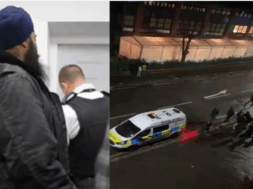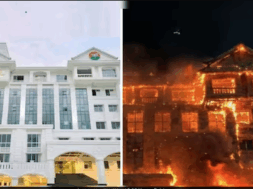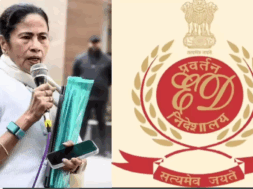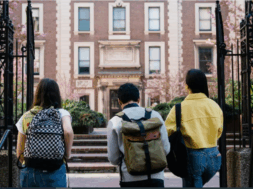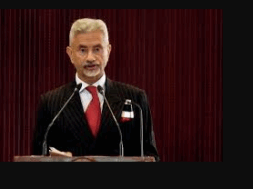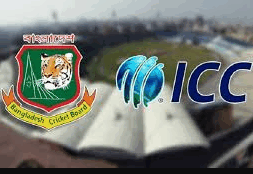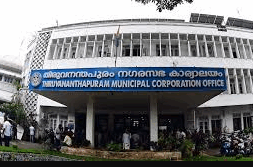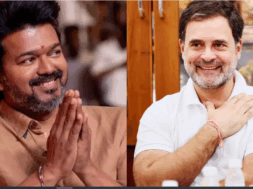
Roving Periscope: India, Russia to hike bilateral trade to $100 bn by 2030
Virendra Pandit
New Delhi: India and Russia are targeting to raise their bilateral trade to USD 100 billion by 2030, balance the lopsided trade, eliminate non-tariff trade barriers, and explore the possibility of a Eur-Asian Economic Union (EAEU)-India Free Trade Area, the media reported after the conclusion of Prime Minister Narendra Modi’s two-day visit to Moscow on Tuesday.
A joint statement issued after multiple rounds of talks between PM Modi and Russian President Vladimir Putin also announced that the two friendly nations plan to establish a bilateral settlement system using their national currencies and introduce digital financial instruments into mutual settlements.
Capping the visit, President Putin decorated PM Modi with Russia’s highest honor, the “Order of St Andrew the Apostle” for his contribution to fostering bilateral ties between the two countries.
Economic collaboration, especially in energy, trade, manufacturing, and fertilizers, dominated the bilateral talks. New Delhi called for “increased supplies of goods from India to achieve balanced bilateral trade” and “reinvigoration of investment within the framework of the special investment regimes.”
“The major thrust of the discussion (between PM Modi and President Putin) was on economic engagement… The two leaders have set a new target of USD 100 billion by 2030. Alongside, they have also agreed on the joint statement on economic cooperation, specifically till 2030,” Indian Foreign Secretary Vinay Mohan Kwatra said during a briefing on the PM’s visit to Russia.
With Indian exports to Russia in FY24 being only at USD 4.2 billion, the two sides stressed the need to increase the volume of trade in agricultural products, food, and fertilizers. In 2023-24, India’s trade deficit with Russia stood at USD 57 billion.
Overall, India’s bilateral trade with Russia stood at USD 65.6 billion in FY24, up 33 percent year-on-year, and nearly 5.5 times higher than the pre-pandemic trade of USD 10.1 billion. It increased especially since 2022 with Indian fuel importers snapping up discounted Russian crude despite repeated criticism by Western nations on Russia’s ongoing invasion of Ukraine.
India also pushed for the need to broaden the trade basket between the two countries, especially concerning the greater market access for goods in the agriculture and industrial sectors. Greater cooperation in key energy sectors, including nuclear energy, oil refining, and petrochemicals also came up in the document, with a focus on “facilitation of mutual and international energy security, taking into account the prospects of the global energy transition.”
The two sides emphasized the optimization of customs procedures through the application of intelligent digital systems for the barrier-free movement of goods.
A lot of this trade is expected to take place through key global routes like the North-South International Transport Corridor, the Northern Sea Route, and the Chennai-Vladivostok Sea Line.
A trade agreement between the Eur-Asian Economic Union (EAEU)—comprising Russia, Belarus, Kazakhstan, Kyrgyzstan, and Armenia—was discussed. “The two leaders spoke about the need to move forward on the India-Eur-Asian Economic Union trade goods agreement. We had one round of discussions between the two countries and it is expected that this would be expedited in the months ahead,” Kwatra said.
The statement also called for the facilitation of entry of Indian and Russian companies into each other’s markets by creating subsidiaries and industrial clusters. Besides, they called for creating new joint (subsidiary) companies by providing them with favorable fiscal regimes.
Promotion of investments and joint projects across various sectors of the digital economy, science and research, educational exchanges, and internships for employees of high-tech companies have also been targeted.
A key takeaway of PM Modi’s Russia visit was his comments on the Ukraine war.
Delivering an unambiguous message, he told Putin that peace efforts do not succeed amid bombs and bullets, and also flagged concerns over a deadly missile strike on a children’s hospital in Kyiv, saying “When we see innocent children dying, then it is heart-wrenching and that pain is very horrible.” The Russian President lauded PM Modi for “trying to find ways to resolve the Ukraine crisis, primarily through peaceful means.”
“Every person who believes in humanity is pained when there is a loss of lives. But when innocent children are killed it causes deep pain. I have spoken to you at length about this,” PM Modi told Putin.
His remarks came hours after Ukrainian President Volodymyr Zelenskyy criticized PM Modi for hugging Putin. “It is a huge disappointment and a devastating blow to peace efforts to see the leader of the world’s largest democracy hug the world’s most bloody criminal in Moscow on such a day,” Zelenskyy posted on X.
In his remarks, PM Modi referred to his extensive discussions on the Ukraine conflict with Putin during a private meeting on Monday evening as well and said dialogue is the only way to find a solution. “For a bright future, for the future generations, peace is most essential. No solution is possible on the battlefield. Solutions and peace talks are not successful amid bombs, guns, and bullets and we have to find the path to peace through dialogue,” he said.
“For restoration of peace, India is ready to cooperate in all possible ways,” PM Modi said, as he appreciated the attention Putin paid to the most pressing issues, “including your efforts to find ways to resolve the Ukraine crisis, primarily through peaceful means.”
PM Modi’s first international visit after he took charge for a third consecutive term in June was closely watched by world powers because of its geopolitical implications. In the run-up to the trip, the Kremlin had claimed the West was “jealous” of the visit while the US State Department said it has made quite clear directly with India its concerns about India’s relationship with Russia.
On Tuesday, the two leaders were shown a permanent working model of the VVER-1000 reactor used at the Kudankulam Nuclear Power Plant in Tamil Nadu, manufactured by the Russian Atomic Agency, Rosatom.
The PM also interacted with the Indian community in Russia, where he announced the government has decided to open two new Indian Consulates in Kazan and Ekaterinburg. He paid homage to Moscow’s tomb of the unknown soldier, dedicated to the Soviet soldiers who lost their lives during the Second World War.
Late on Tuesday, the PM left for Vienna, Australia. It will be the first visit by an Indian PM to Austria in over 40 years, the last being of then PM Indira Gandhi in 1983.

